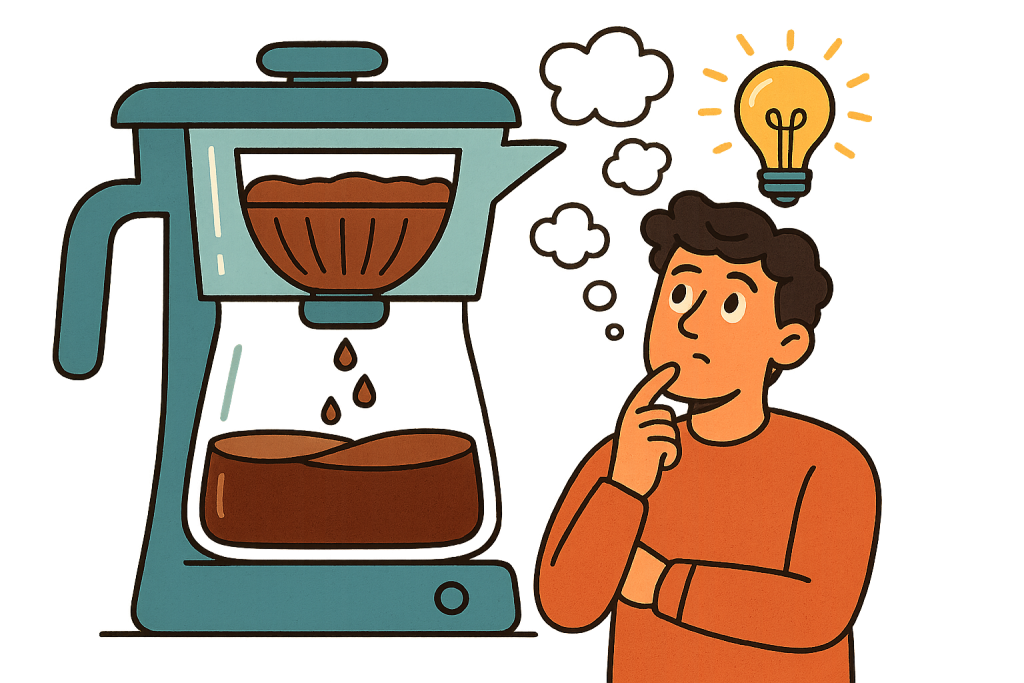Letting ideas percolate before acting can transform fleeting thoughts into breakthrough solutions, boost creativity, and improve decision-making. This article explores how giving ideas room to breathe enhances innovation and outcomes.

1. What Is Percolation in Creative Thinking?
The concept of letting ideas percolate before acting draws on the “incubation effect” introduced by Graham Wallas in 1926. After prepping and stepping away from a problem, our subconscious takes over—leading to “illumination” or insight upon return. This process helps bypass fixation on obvious solutions, enabling fresh, creative breakthroughs.
2. Why Letting Ideas Percolate Before Acting Matters Now
Modern trends like deep work, remote collaboration, and AI-driven overload demand smarter mental processes. Rushed decisions often result in burnout and suboptimal outcomes. Here’s why percolation matters today:
- Remote Teams & Distributed Work: Collaboration across time zones naturally introduces incubation windows.
- AI Brainstorming Overload: With tools generating ideas instantly, the human mind still benefits from slow, reflective processing.
- Creative Economy: Industries like gaming, biotech, and design value unconventional, “aha” thinking that incubation fosters.
3. Scientific Evidence That Supports an Incubation Pause
3.1 Incubation Enhances Creative Problem Solving
Meta-research confirms that stepping away from a problem and returning later boosts performance on creative tasks—but only when the break involves undemanding activity or rest . Incubation breaks help reduce fixation, allowing subconscious connections to form.
3.2 Unconscious Cognition Works Behind the Scenes
Studies suggest that unconscious thought isn’t idle—it actively processes problems during incubation. Brain imaging during these periods shows ongoing activity in networks tied to intuition and creativity.
3.3 Even 50–100ms Pauses Help Decisions
Neuroscience reveals that delaying a decision by as little as 50–100 milliseconds gives our brain vital time to filter distractions and improve accuracy. While brief, this pause has significant real-world impact.
4. How It Works in Practice
Here’s how to strategically let ideas percolate before acting:
Step 1: Prep the Mind
Gather information, explore angles, and define your core problem.
Step 2: Step Away
Take a low-demand break—walk, stretch, shower. These let your subconscious work behind the scenes.
Step 3: Revisit the Idea
Return with fresh eyes. Many innovators describe moments of sudden clarity—Poincaré famously arrived at mathematical insights while walking .
Step 4: Act with Context
Use the clarity from incubation to refine a strategy and make informed decisions.
5. Real-World Applications
Tech & Innovation
Tech incubators encourage startups to pursue side-projects or “20% time”—a deliberate buffer that encourages innovation frontiersin.orgtrajdash.usc.edu.
Complex Decision Environments
In critical domains (e.g., medical, legal, or finance), brief pauses reduce errors. Courts embrace “percolation” by allowing issues to simmer before final rulings .
Personal Productivity
Creative professionals report that shower time, dog walks, or cooking spark “shower thoughts” where ideas percolate before acting.
6. Turning Percolation into a Habit
To make this a productive habit:
- Schedule incubation breaks: Use the Pomodoro Method with 5–10 min low-demand intervals.
- Choose the right activity: Gentle movement or ambient environments (e.g. shower) tend to work best.
- Let go of guilt: View the pause as an investment. The short-term delay yields better decisions later.
- Track insight patterns: Note when good ideas surface—track context and activity that triggered them.
- Reiterate: Use cycles of incubation during large projects—a mini version of “20% time” within the workflow.
7. Emerging Trend: Workspace Design for Incubation
Forward-thinking companies are now designing workspaces to foster deliberate percolation:
- Quiet zones for walk-and-think sessions
- Mind-wandering labs with white noise and sensory-minimal input (e.g., showers or nature-integration)
- Reflection pods for ten-minute introspection breaks
This design philosophy accepts that strategic delay—letting ideas percolate before acting—can drive innovation and productivity.
8. Risks & When to Skip It
- Over-delaying: It becomes procrastination when you delay decisions past their usefulness.
- High-stakes urgency: Emergency triage or crisis response needs fast action—don’t incubate there.
- Context clarity: Percolation works best when you’ve laid proper groundwork. Don’t skip the prep.
9. Summary: The Power of Percolation
Letting ideas percolate before acting isn’t procrastination—it’s strategic incubation. Research shows it boosts creativity, improves decision accuracy, and yields better innovation. By embedding pauses and sensory-minimal tasks into workflows, you unlock slow-thinking benefits rooted in cognitive science.
References
Friedman, J. The Value of Percolation. JaneFriedman.com (2021).
https://janefriedman.com/the-value-of-percolation/
Sio, U. N. & Ormerod, T. C. Does incubation enhance problem-solving? A meta-analytic review. Psychological Bulletin (2009).
https://en.wikipedia.org/wiki/Incubation_(psychology)
Teichert, T., Ferrera, V. P. & Grinband, J. Humans optimize decision-making by delaying decision onset. PLoS ONE 9(3): e89638 (2014).
https://doi.org






